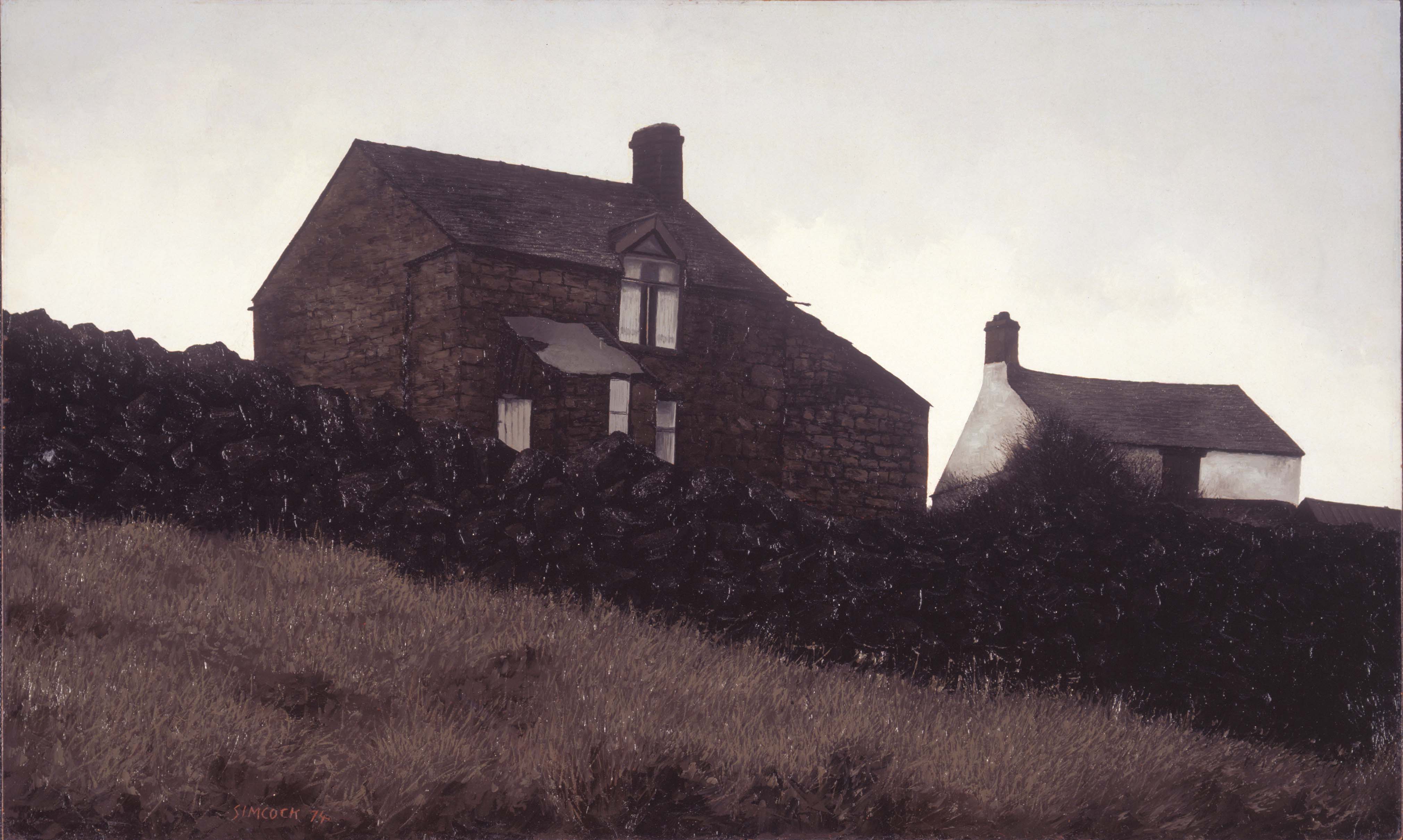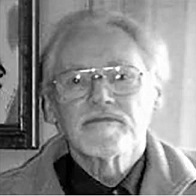Jack Simcock
Background
Born into a mining family, Simcock left school and, with only the vaguest idea of what he wanted to do, entered a drawing office dealing with coalmining machinery, one of several jobs during which he also attended night school. Long private studies in pursuit of a career in architecture led him close to a breakdown. He was conscripted and, during national service, started painting; on demobilisation he began working in oils. He joined the Burslem part of Stoke-on-Trent College of Art but, despite the purchase of one of his pictures for the City Art Gallery, Simcock twice failed to gain the national diploma.
Simcock is noted for sombre landscape paintings of his home village. In 1958 the artist, son of a miner, descended from a line of dissenting small farmers and labourers, bought West View, built originally for the businessman who had set up quarrying on the top of Mow Cop, a ridge of millstone grit between the Cheshire plain and the Staffordshire moorlands.
Landscape with Cottage
Demand for millstones had led to prosperous quarrying as early as the 14th century, while traditional cottages were built from quarried or gathered rubble stone and developments from these reflected the activity
of an extended family. Simcock focuses on these unassuming dwellings, accentuates the tonal bleakness of their settings, and manipulates the impasted paint in relation to the material being depicted, coarse
grass, dry stone wall or the roughly coursed material of the cottages. A significant relationship between locale, motif and painting practice was clearly being sought from within the bounds of topographical
representation.


